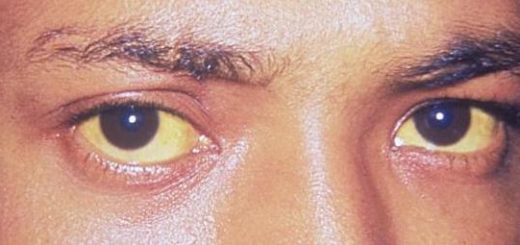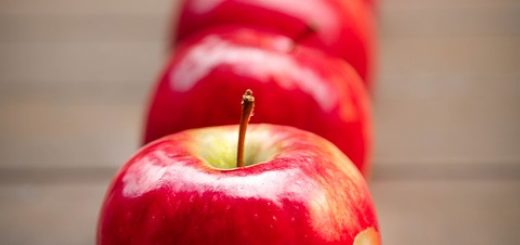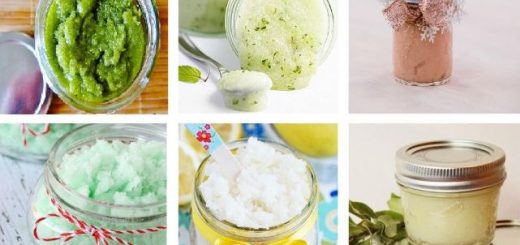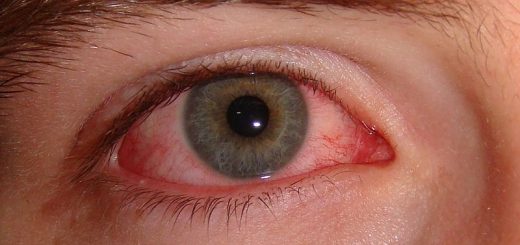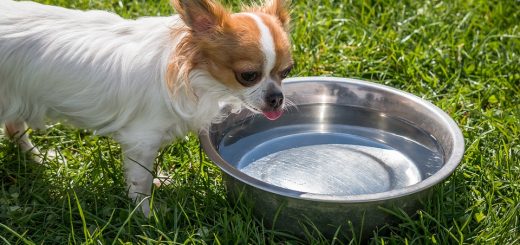37 Home Remedies for Mastitis (Breast Infection)
The joys of being a new breastfeeding mother are often accompanied with bleeding nipples and nipple cracks. These cracks can be the cause of a more painful breast infection called mastitis. Mastitis can cause immense pain and is sometimes curable with the use of antibiotics.
Symptoms of Mastitis
- Red patches on the flesh of the breasts that expand to a whole side of the breast
- Breast sensitivity
- Breast pain.
- Fever
- Chills
Notable Information
If you contract mastitis, you may suffer from one or all of the symptoms. The notable point about mastitis is that this pain can be due to a blocked milk duct. Simply having a blocked milk duct is not the same as having mastitis. A bump on the flesh of the breast marks one of the signs of a clogged duct. The other signs are that the duct is also sensitive to finger touch and fever is to be expected. A blocked duct can simply be resolved by placing a heat pack on the breast prior to feeding or allowing the infant to feed on the infected breast. Unlike with mastitis, a blocked breast duct heals within a day of contraction.
A variety of feeding strategies ought to be used as painful nipples may lead the mum to feed less, which can cause engorgement. If engorgement is not treated effectively it can spur further breast infections. Care should be taken and the issue of aching nipples needs to be urgently addressed so that breast infections and engorgement can cease.
Remedies for Breast Infections
-
Ibuprofen
Breastfeeding is quite an intense task. It leaves one with many aches. Ibuprofen is effective in easing pains as well as remedying any fever associated with breast infections. However, only use ibuprofen during breastfeeding with the needed permission from a doctor and it should be used now and again, not continuously.
-
Probiotics
Probiotics are a must after the infection ceases to ensure the immune system remains strong and well-enhanced. These can be accessed from tablets, powdered form or from natural sources like yogurt. The probiotics dosage can be three capsules twice a day at first and thereafter one can return to the normal dosage. Yogurt can be eaten as often as liked.
-
Massage
Let your infant feed on the infected breast whilst pumping or rubbing the breast. This helps with the secretion of milk and will ease the pain considerably well.
A mastitis rub entails gentle throbbing of the infected portion of the breast. You need to start from the outer circumference of the breast and working your way towards the inner nipple portion.
-
Warm Showers
Having a warm shower with the water falling directly on the breasts will lead to milk squirting from the nipples and thus relieve any form of engorgement. The relief provided by the warm water is temporary and does not lead to more milk being produced.
-
Skip the Soap
Baths and showers are important but bear in mind not to leave the nipples wet for too long. It is vital to ensure your nipples are not left dry and cracked as well. Using soap on the breasts takes away the natural oils so by avoiding soaps, the skin around the breast area remains well hydrated and not too moist.
-
Castor Oil Pack
Castor oil heat packs can help to relieve some of the symptoms of breast infections. To make the castor oil pack, use a wet cloth soaked in warm water and add a couple of drops of castor oil.
The castor oil pack can be placed on the infected breasts while resting on your bed. Thereafter, the area where the castor oil is placed should be covered with a hot water bottle.
The mother should relax for an hour or so and afterward she can cleanse the area with baking soda or a mild soap. It is important to cleanse the castor oil off prior to feeding as the castor oil can cause the baby to have diarrhea.
-
Dandelion Compress
Just like the castor oil; a dandelion compress is another option. To make the compress, one can boil the chopped Taraxacum officinale root (dandelion root) in a few cups of water until less of the liquid remains. This remaining liquid can be used to make the compress. Use this compress the same way you would use the castor oil compress.
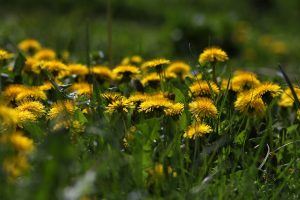
While the roots are used for this home remedy, dandelion heads can be used in recipes for a tasty treat
-
Cold Compress
It is beneficial to put ice packs on the breasts in between feeds. Mothers are urged to wear a bra that keeps the packs firm on the breasts. It is advisable to insert a cloth between the ice packs and the breasts to avoid the cold bite of any sort. While ice packs can be frozen vegetables, an alternative is a frozen packet of popcorn seeds. This can help to numb away the pain that is often associated with breast infections.
-
Ice Baby’s Gums
When the baby begins teething, there is the tendency for the baby to attempt to teeth on the nipples. A good way to ease the teething related pain, as well as numb the baby’s gums, is by using a frozen wet fabric. Gently rubbing this on the baby’s gums will be helpful. You should also allow the baby to suckle on it before feeding time.
-
Drink More Water
As in the case of most infections, water is essential in the remedy processes. The benefit of drinking tons of water is that there will be a constant milk supply and the body will flush out infections quicker. Try to drink at least eight glasses of water a day.
-
Rest
Mastitis surely is evidence of an overworked body and therefore, new mothers need the rest. Having prolonged rest periods can speed up recovery time. If possible, have dad or another family member spend more time with the baby so that you can get some much-needed rest.

-
Airing the Breasts
If a mother puts her bra on instantly after a feed, it is likely that excess milk will become soaked in the bra’s pad and thus keeps the nipples moist. It’s too much moisture that mothers need to avoid to prevent the breeding of bacteria. This can also eliminate pains and nipple damage. Arising from the above, it is valuable to air the nipples as often as possible.
The go-braless option under a loose top is also a beneficial step. After allowing the baby to suckle and when mums are having a nap after a feed.
-
Wear Supportive and Breathable Bras
Bras are an important consideration during breastfeeding. Ensure you stick to wearing a high-quality bra that supports fully but cannot be too tight. A tight bra will cause much pain to the breasts.
Wearing bras made of cotton or soft materials promotes airflow and allows the breasts to be refreshed. Cotton-based bras are likely to be the most comfortable and breathable. Synthetic material bras trap heat making the breasts moist and this can be problematic.
- Feeding Times
Previously, mothers were told to feed at well spaced out times. This approach left babies to be more cranky and mothers had more engorged breasts.Modern doctors advise mothers to feed when babies show signs of hunger and the feed should be prolonged until the baby is full.
The feeding should be so regular that babies can be woken up from naps after four or so hours of feeding. Allowing the baby to sleep in a cot next to the mother’s bed eases the tension of regular feeds.
-
Ease the Release
If the baby’s suckling becomes unbearable and you need to remove the baby’s mouth from the breast, go ahead. What you need to do is to place a finger between the baby’s mouth and the breasts. It is rather difficult to pull the baby off the breast while he or she is still sucking. Easing the baby away from the breast can make detaching much less painful, especially if your baby has teeth!
-
Use a Breast Pump
Feeding more frequently mostly helps ease the pangs of engorgement. If the breasts still feel hard and retain lots of milk, then the mother may express milk using their hands or a breast pump.
Caution must be taken not to express lots of excess milk as the body is oblivious to the fact that milk is being released using a pump and is not used to fill the baby. As soon as too much milk is released, the body tends to produce more milk to make up for the lost milk. Production of more milk is exactly the thing you trying to avoid when the breasts already ache from the fullness.
-
Vitamin C
Pure vitamin C can be used to ease off the symptoms from the infection. This is a healthy nutrient and is not expected to have any side effects on the baby. To use this home remedy, you can either take vitamin C capsules or eat more foods that are rich in vitamin C, like citrus foods.
-
Cabbage Leaves
Cabbage leaves are harmless and eases tension along the breast ducts. When using the cabbage leaf option, one needs to apply the cold leaves on the breast paying attention to the painful duct. These leaves should be replaced with new leaves every few hours. However, cabbage leaves can lead to a decrease in milk supply so it’s best to not overuse this remedy whilst still breastfeeding.
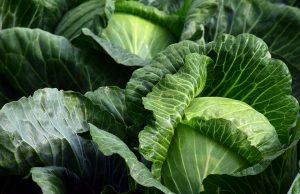
White cabbage plants
-
Honey
Honey’s healing properties are undeniable and as already well known, honey works against any bacterium. This is the factor that leads to honey being used to remedy mastitis. Manuka honey is well-reviewed for having properties which control bacterial growth. Simply rub honey on the tender spots as often as needed to promote healing.
20. Apple Cider Vinegar
Like honey, apple cider vinegar has many anti-swelling propensities and properties that work against bacteria. Apple cider vinegar acts to battle against the infection as well as provides the body with the needed energy.
A mixture should be made using half a cup of apple cider vinegar to along with a cup full of warm water. The mixture can be put directly on the breasts using cotton wool. The solution should remain on the breasts for only fifteen minutes and thereafter, the breasts must be thoroughly cleansed.
Alternatively, a drink can be made by adding a tablespoon of apple cider vinegar to a glass of water with drops of honey. This drink can be drunk once a day.
-
Pineapple Juice
The cooling effect offered by drinking pure pineapple juice is also effective. Pineapples have bromelain which acts to minimize swelling and unblocks ducts. Simply place pineapple rings on your breasts to get relief. Wiping your breasts with pineapple juice will provide you with similar benefits.
-
Oregano Oil
Oregano oil is a natural cure which has properties that prevents against infections, bacteria, viruses and fungi. It aids in limiting mastitis if two oil-filled capsules are taken twice daily for five days. Precautions must be taken when handling this oil and the physician’s counsel should be sought before use.
-
Fermented Cod Liver Oil
Having a teaspoon of the cod liver oil is essential during breast infections. Cod liver oil is well reported for the many curative and restorative properties. Like oregano oil, ask your doctor about this product before use.
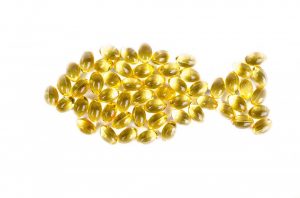
Cod liver oil pills
-
Coconut Oil
Coconut oil is a virile remedy for breast infection treatment. The coconut oil must be rubbed on the breast right into the armpit. This will ease the tension mainly in the blocked duct.
Coconut oil aids the healing of cracked nipples and causes aches to cease. With the coconut oil absorbed in the skin, one can add finely cut potatoes on the blocked breast duct.
-
Olive Oil
Olive oil is best applied to dry or cracked breasts. After the baby suckles, rub a little of the oil or any cream that has lanolin properties onto the breasts. You can do this as often as needed to get relief.
-
Sunflower Lecithin
Sunflower lecithin must be taken by adhering to prescription directions found at the back of the bottle. This is a good help for ensuring that milk is thinned out as well as assist in getting rid of the blockages. It also helps with brain functioning and many mothers continue using it even when the infection no longer persists.
27. Echinacea
Herbal properties of Echinacea build the immune system to battle infections. The flavonoids contained in Echinacea acts as an antibiotic. However, prolonged usage of echinacea is not advisable.
The root can be put on the wounded portions of the breast throughout the day. Remember to cleanse the breasts from the Echinacea before allowing the baby to suckle.
Echinacea droplets can also be added to water and consumed within a week. Drinking echinacea tea is also a viable option.
-
Rosemary Infusion
This remedy works well and the cure can be made using a few teaspoons of dry rosemary and placing it in a jar of boiled water. Prior to drinking, the infusion must be strained.
Adding more rosemary spice to your meals can also have a similar effect.
-
Lavender Tea Tincture
An alternative to rosemary is lavender and the tincture can be made easily by placing lavender tea bags into boiling water. The tea should be given time to cool. A cloth should be placed in the tea and then the soaked cloth needs to be applied directly onto the affected breasts.
More simply, the used lavender tea bags can be put on the breasts.
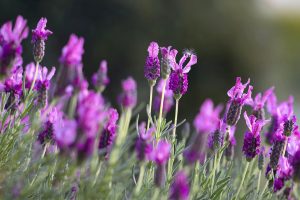
Lavender flowers
-
Calendula
This flower eases aches and inflammation. A calendula paste can be made using the flowers and comfrey leaves.The paste must be lukewarm prior to application on the breasts and must be applied for a mere fifteen minutes. Ready -made calendula cream can also be smeared on the breasts throughout the day. Rinse breasts before allowing the baby to suckle.
-
Aloe Vera
An alternative to rosemary and lavender is Aloe Vera gel. Yet again, the curing abilities of the aloe are no secret and aloe is sure to relieve the pain of breast infections. To use Aloe Vera, the leaf has to be cut and extracted for the gel. The gel should be gently rubbed on the sore area. The gel will dry. Once fully dried, the aloe paste can be washed off and the wet breast area must be softly dried with a cloth. This procedure ought to last for a few days. The aloe must be rinsed off the breasts before allowing the baby to suckle on them
-
Fenugreek Mix
Fenugreek is known to relieve infections whilst simultaneously stimulating the milk producing glands. To make the mixture, fenugreek seeds must be left in water overnight and blend into a paste in the morning. The paste must be smeared on a cloth and must be allowed to reach a warmer temperature in the microwave. The heated cloth must be made to rest on the aching breasts and this action should be continued for at least fourteen days.
Fenugreek tea is also a worthy option and should be gulped thrice daily for visible results.
-
Raw Garlic
Garlic remedies infections in such a potent manner. Garlic pieces can be placed on the tongue and swallowed with the aid of water. However, garlic has terrible side effects for the babies’ tummies and this explains why nursing mothers should use it sparingly.
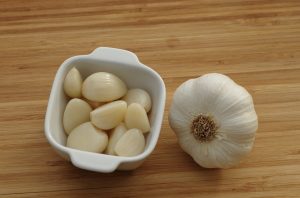
Garlic cloves and whole garlic
-
Using Props
When you place a pillow on your lap, this will allow the baby’s mouth to be close enough to the breasts for pleasant feeding. Babies who get positioned so low often tug at the nipples and therefore end up pulling them down. This will also mean clutching the nipples with their gums to aggravate nipple cracks.
-
Burp and Switch
It is important to remember to allow the baby to suckle on the infected breast first. Allow the baby to drink for five minutes and then burp the baby. After the baby’s burp, allow him or her to drink from the other breast. Carry on this procedure till the baby is full.
This method makes certain that milk from both breasts is drained. Allowing the baby to suckle on one breast nonstop makes the other breast feel overly full.
-
Grip the Nipples
To release any curdled milk it is vital to hold the nipples within one’s fingers and tug at it. This should be done whilst rolling the nipples from side to side.
-
Warm Ghee
If you are confronted with mastitis, one approach you can take is to massage the breasts with warm Ghee. This needs to be done by keeping to a circular pattern when massaging the breasts with this remedy. The process will unblock the ducts and stimulate milk flow.
Were these home remedies helpful to you? If so, comment below!
References
http://www.searchhomeremedy.com/home-remedies-for-mastitis/
http://holisticsquid.com/mastitis-and-blocked-ducts/
http://www.findhomeremedy.com/5-effective-home-remedies-for-mastitis/
http://kellymom.com/bf/can-i-breastfeed/herbs/natural-treatments/
http://www.naturalremedies.org/mastitis

